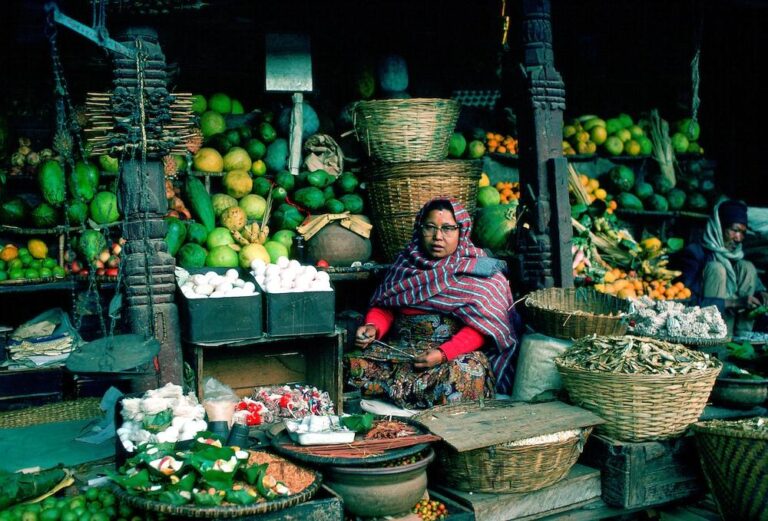Kathmandu, — Nepal’s consumer price inflation dropped to 4.1% year-on-year in mid-August, down from 7.52% a year ago, according to a report released by Nepal Rastra Bank on Thursday. The sharp decline in overall inflation is primarily attributed to a significant decrease in non-food and service inflation, which stood at just 2.94%. However, food prices remain stubbornly high, mirroring past levels.
The report shows that food and beverage inflation reached 6.17% during the review month. Notable increases were seen in the price index for vegetables (up 19.07%), pulses and legumes (12.09%), cereal grains and their products (9.15%), and milk products and eggs (3.66%).
Nepal Rastra Bank also announced an update to its consumer price index (CPI) base year to 2023-24, replacing the previous 2014-15 base year. Under the new index, food and beverages now account for 35.49% of the total CPI weight, down from 43.91% in the previous index. Meanwhile, non-food and services hold a higher share at 64.51%.
Despite the drop in overall inflation, the public remains skeptical, as food prices continue to rise. “That’s a wrong statement,” said Ramu Paudel, spokesperson for the central bank, in response to claims that the official inflation rate does not reflect the reality of rising food costs.
Economist Manbar Singh Khadka from the Asian Development Bank pointed out that since nearly 60% of Nepal’s imports come from India, India’s inflation rate heavily influences Nepal’s consumer prices. In August, India’s inflation eased to 3.26%, while Nepal’s inflation slightly increased to 4.1%, influenced by added transportation costs and other factors.
With Nepal’s open border with India and a fixed exchange rate to the Indian rupee, inflationary shocks from India easily spill over into Nepal’s economy, according to the International Monetary Fund.
For the first time, the central bank’s updated inflation data includes price collection from all 77 districts, making it more inclusive and representative. The report also noted that the highest inflation was recorded in Sudurpaschim province at 6.69%, while Karnali province saw the lowest inflation rate at 3.46% between mid-July and mid-August.
Despite the updated index, Paudel emphasized that the central bank’s inflation report may not always match market experiences. The prices of 525 items across 249 commodities are tracked for the report, with prices collected weekly, monthly, and quarterly from 87 market centers nationwide.



 About Us
About Us
Comment